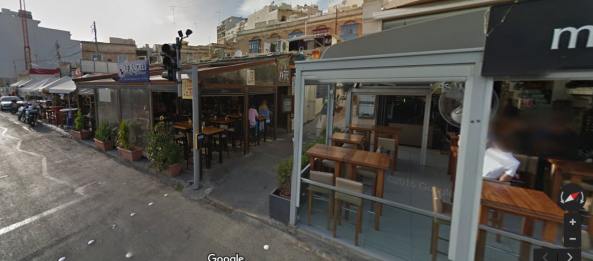Aħna ngħixu f’eko-sistema li qed tinqered ftit ftit. Dan hu rikonoxxut minn kulħadd.
Ħarsu ftit, per eżempju, lejn l-ewwel sentenzi tal-White Paper intitolata Riforma fil-qasam tar-Raba’, White Paper ippubblikata għall-konsultazzjoni mill-Ministeru għall-Agrikultura f’Ottubru li għadda.
Dakinnhar kien intqal li: Il-ħarsien tar-raba’ huwa fundamentali biex niggarantixxu s-sostenibbiltà tal-biedja, il-produzzjoni tal-ikel, u l-ħarsien tal-ambjent rurali. Huwa għalhekk li meta jkun hemm problemi f’dan il-qasam, dawn ma jolqtux biss lill-bdiewa, iżda għandhom impatt qawwi fuq il-provista u s-sigurtà tal-ikel, u l-kwalità tal-ambjent li jista’ jitgawda mis-soċjetà.
L-art agrikola għandha valur: valur imma li mhux biss wieħed ekonomiku. Għandha valur ambjentali u soċjali. Dan hu rikonoxxut anke mill-Ministeru għall-Agrikultura. Għalfejn, mela, nistaqsu, dan il-Ministeru ma jieħux posizzjoni iebsa kullmeta Ministeri oħra jagħtihom l-estru għall-qerda ta’ art agrikola?
B’mod kontinwu, l-Awtorità tal-Ippjanar tirċievi u tipproċessa applikazzjonijiet għal żvilupp li jeqred art li tinħadem jew li kienet tinħadem. Dan isir għar-raġuni sempliċi li l-pjani lokali huma msejsa fuq filosofija tal-ippjanar għall-użu tal-art li tonqos milli tħares il-valur intrinsiku tal-biedja. Tqis li l-biedja hi xi ħaġa ta’ bla siwi u li nistgħu ngħaddu mingħajrha. F’din is-sitwazzjoni l-Ministeru tal-Agrikultura jibqa’ sieket, kontinwament!
Sfortunatament, l-uniku valur li l-Awtorità tal-Ippjanar tifhem u tapprezza hu dak li jiffaċilità l-ħolqien tal-opportunitajiet għal min irid idawwar lira ta’ malajr. Kontinwament, l-Awtorità tal-Ippjanar hi kompliċi fil-qerda gradwali ta’ kull ma hawn madwarna.
Xogħol mhux meħtieġ fuq l-infrastruttura tat-toroq, tul dawn l-aħħar snin, qered meded kbar ta’ raba’. Is-settur privat ilu għaddej jittrasforma ammont mhux żgħir ta’ raba’ f’art għar-rikrejazzjoni privata, għal xi barbeque jew għal xi picnic. Bħala konsegwenza ta’ dan qed jeqred komunitajiet ta’ bdiewa. L-Awtorità tal-Ippjanar, minkejja li għandha is-saħħa legali li dan kollu twaqqfu, ma għamlet xejn. Hu biss dan l-aħħar, wara l-għagħa li rriżulta minn numru ta’ deċiżjonijiet tal-Qorti dwar il-qbiela li l-Ministeru għall-Agrikultura qam minn raqda twila u ma baqax sieket!
Jiġu f’moħħi żewġ applikazzjonijiet għal żvilupp, applikazzjonijiet li għadhom pendenti: waħda f’Ħal-Qormi biex jinbena u jkun operat supermarket fuq art agrikola barra miż-żona tal-iżvilupp (ODZ). L-oħra dwar il-bini ta’ skola f’Ħal-Għaxaq, anke din fuq art agrikola.
Għaddejna minn dawn l-argumenti diversi drabi, b’mod partikolari fid-dibattitu nazzjonali dwar l-eżerċizzju biex tintgħażel l-art għall-Università Amerikana f’Marsaskala xi snin ilu! L-argumenti ta’ dakinnhar għadhom jgħoddu anke illum. Ma nistgħux nibqgħu nissagrifikaw ir-raba’. Għandna ftit wisq raba’ u jeħtieġ li nibżgħu għall-ftit li għandna.
Il-formola tal-applikazzjoni biex tinbena l-iskola f’Ħal-Għaxaq tgħid ċar u tond, bl-iswed fuq l-abjad, li l-użu tal-lum tal-art hu wieħed agrikolu. Dan jgħodd għal kull wieħed mill-35,970 metru kwadru li hu propost li jinbnew. Il-formola tal-applikazzjoni l-oħra dwar is-sit f’Ħal-Qormi, min-naħa l-oħra, tgħid li l-art f’dan il-kaz b’qies ta’ 4708 metru kwadru u li hi pproġettata li tkun żviluppata f’supermarket, bħalissa mhux użata!
Dawn l-applikazzjonijiet tal-ippjanar għadhom fi stadju bikri avolja dwar l-iżvilupp propost f’Ħal-Għaxaq għadu kif ġie ippubblikat studju dwar l-impatti ambjentali (EIA) reċentement.
F’dan l-istadju l-mistoqsija toħroġ waħedha: hemm ħtieġa għall-iżvilupp propost? It-tweġiba, fil-fehma tiegħi, hi ċara: le ma hemmx ħtieġa. M’għandniex bżonn iktar supermarkets. Pjuttost li diġa għandna iżżejjed minnhom!
Dwar l-iskola proposta f’Ħal-Għaxaq l-istorja hi ftit iktar kumplessa. Imma xorta mhux iġġustifikat li tkun issagrifikata art agrikola. Għandhom ikunu esplorati soluzzjonijiet oħra, avolja naf li ilu żmien mhux ħażin isir (bla suċċess) tiftix għal sit alternattiv. Is-soluzzjoni tista’ tinstab fl-iżvilupp mill-ġdid ta’ bini mitluq u dilapidat, li minnu għandna bosta, mxerred mal-gżejjer tagħna.
Neħtieġu fuq kollox politika koerenti dwar il-ħarsien tar-raba’. Flok ma jorqod, u kultant jistenbaħ, il-Ministeru għall-Agrikultura għandu jkun fuq quddiem nett f’din il-ħidma. Jista’ jibda billi jassigura li l-proġetti pubbliċi u l-politika tal-Gvern jagħrfu l-valur intrinsiku tal-biedja. Minn hemm irridu nibdew għax jekk is-settur pubbliku ma jkunx ta’ eżempju xejn mhu ser jinbidel: nibqgħu għan-niżla!
ippubblikat fuq Illum: 8 ta’ Jannar 2023







